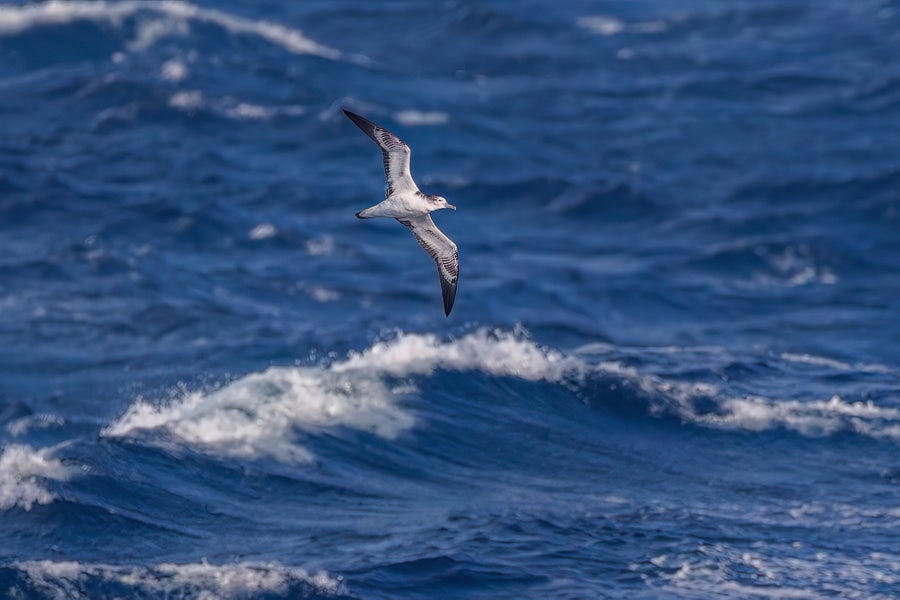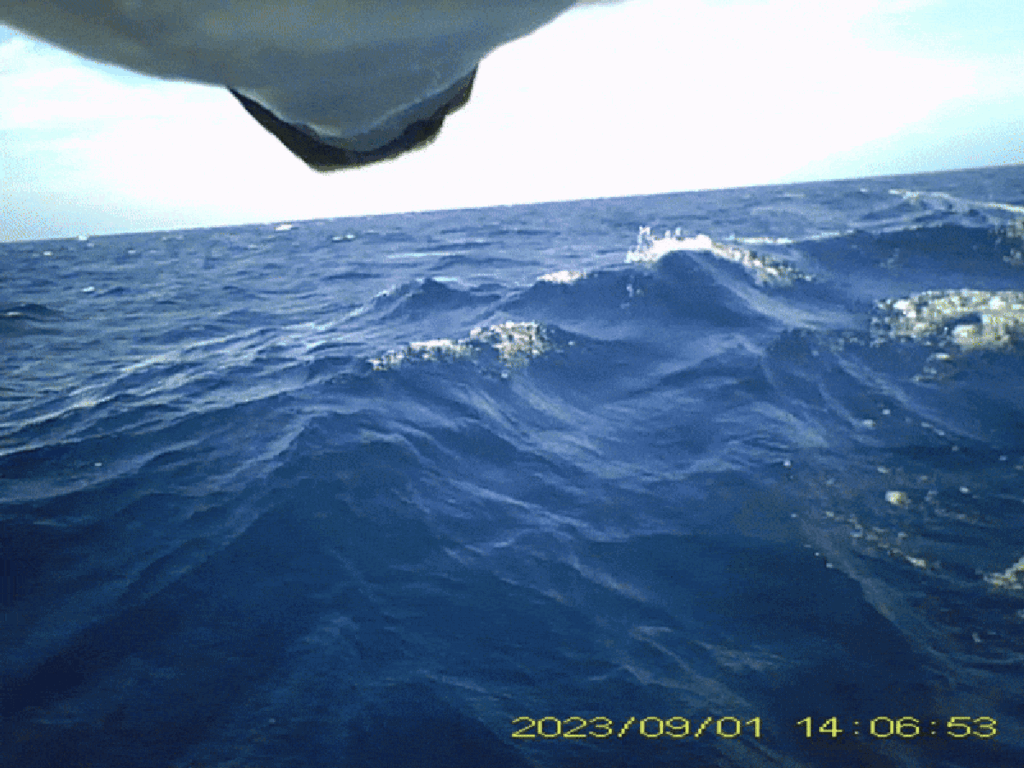August 18, 2025
3 min read
Why This Seabird’s Superpooper Lifestyle Is Amazing Scientists
The first detailed observation of the bathroom habits of Streaked Shearwaters at sea leave scientists with a surprising load of questions
When a scientist started fixing backward-facing cameras to the bellies of seabirds called Streaked Shearwaters in a breeding colony in Japan, he had pure intentions: he wanted to observe the birds’ leg movements as they launched into flight from the water.
And so he sat down with the video footage only to see—splat!—very little besides—splat!—poop. Leo Uesaka, a seabird biologist at the University of Tokyo, noticed that his cameras were recording an awful lot of midair pooping. It was time to change his research project.
The results of his refocused analysis of 35 hours of footage from 15 birds, published on August 18 in the journal Current Biology, show several surprises. The Streaked Shearwaters (Calonectris leucomelas) were pooping every four to 10 minutes, an average of five times per hour, losing perhaps 5 percent of their body mass hourly. Each individual bird seemed to have a regular interval at which it pooped. And the birds almost exclusively pooped when flying, occasionally seeming to take off for that sole purpose.
On supporting science journalism
If you’re enjoying this article, consider supporting our award-winning journalism by subscribing. By purchasing a subscription you are helping to ensure the future of impactful stories about the discoveries and ideas shaping our world today.

A more dignified view of a Streaked Shearwater.
That’s three strange findings from one simple innovation: turning the bird-mounted video camera around. “Video loggers are always looking forward to share the bird’s view,” Uesaka says. And if Uesaka didn’t expect to see much from footage facing the other direction, he’s in good company, other researchers say.
In the study, Uesaka and his co-author “have pointed out something that probably very few people ever even thought about,” says Hugh Ellis, a biologist at the University of San Diego, who studies seabirds but was not involved with the new research. “Everybody’s going to want to know whether their seabirds excrete only over water.”
Although research on seabird pooping habits might sound silly, it’s not just a matter of idle curiosity: there are important scientific questions at play.
“We know that seabirds have a huge influence on ecosystems via the prey that they consume,” says Ruth Dunn, a marine ecologist at Lancaster University in England, who studies seabirds and was not involved with Uesaka’s study. “But increasingly now, research groups are beginning to think about the influence of the other end, the guano that they’re excreting.” (Guano is the scientific term for seabird poop—although it’s not really poop per se because birds have a multipurpose hole called a cloaca for disposing of mixed waste products and package their urine into a goopier product that results in less water loss than mammals’ urine. But you know what we mean.)
It’s not just seabirds either—in recent decades scientists have started recognizing that all animals produce waste that can, depending on their habits, move vital elements such as phosphorus and nitrogen throughout ecosystems.
“Of course, all animals excrete or defecate in some way,” says Joe Roman, a conservation biologist at the University of Vermont, who studies nutrient cycling and was not involved in the new research. “Everything from the smallest insects to bison to wolves—all species can play a role in this movement of nutrients between systems.”
If plants are the lungs of the planet, then this nutrient cycling is a sort of circulatory system—the question is what kind of scale it occurs on. “They also can move nutrients when they die, but of course you only die once,” he says. “For most animals, they’re peeing and pooping every day.”
Or, in the case of Streaked Shearwaters, they’re doing so every few minutes. Uesaka and his co-author, Katsufumi Sato of the University of Tokyo, can’t definitively explain why the birds poop so often or why they defecate from the air, although the researchers posit that excreting almost exclusively during flight could be a sort of hygiene measure.
Unfortunately, that strategy would be hygienic only for the pooper. Uesaka says that the footage comes from foraging trips in which the shearwaters form large flocks, with some birds resting on the surface while others fly—and poop—overhead. He says it’s important for scientists to know how much birds are pooping at sea, given that bird flu is decimating wildlife and can spread via feces.
Ellis suspects that the stunning frequency Uesaka observed is unique to Streaked Shearwaters or their close relatives. He says the finding doesn’t match with his experience, which recently has focused on gulls and terns.
Uesaka has already gathered equivalent video footage for Black-tailed Gulls (Larus crassirostris), but he hasn’t felt moved to start combing through it yet. The birds, it turns out, aren’t very compelling videographers. “Most of the time, they’re just filming the ocean and their butt,” he says.

